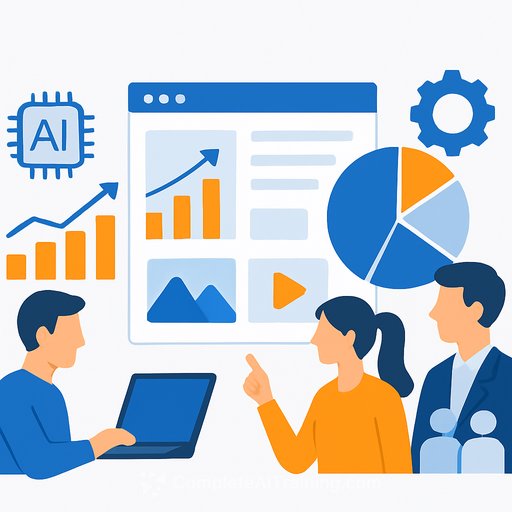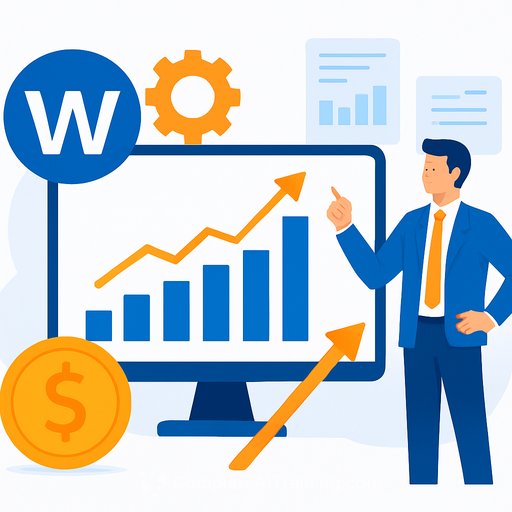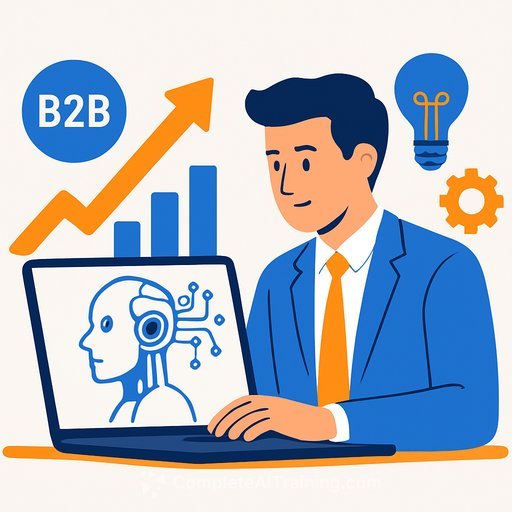How AI-Driven Marketing Platforms Are Transforming the Industry
AI is moving from buzzword to baseline. Predictive analytics, automated content creation, and sharper segmentation are giving teams speed, precision, and focus. The payoff: smarter decisions, leaner budgets, and campaigns that actually convert.
There's a catch. Data privacy, transparency, and ethics need real guardrails. The teams that combine automation with human judgment will keep trust intact while shipping better work, faster.
Predictive Analytics: From Guesswork to Foresight
Predictive models turn historical data into action. You can forecast demand, spot churn risks, and prioritize channels based on projected ROI. Less gut feel. More math.
Use cases that move the needle: lead scoring, dynamic pricing, budget allocation, and inventory-aware promotions. Start with a single high-impact decision and push it through a predictive model before you try to rebuild everything.
Operating Tips
- Define "valuable outcomes" first (revenue, LTV, CAC payback), then train models on those targets.
- Feed models clean, recent data. Stale inputs equal stale predictions.
- Run A/B holdouts to verify lift before scaling.
AI Content Generation: Scale Without Losing Consistency
AI can draft blog posts, emails, social copy, and visuals in minutes. That frees your team to do what actually differentiates: angles, offers, and storytelling.
The key is control. Build brand voice guidelines, reference libraries, and prompt templates. Keep humans in the loop for strategy, fact-checking, and final edits.
Operating Tips
- Create reusable prompt frameworks for each asset type (email, ad, landing page) and include audience, outcome, CTA, and tone.
- Use AI for first drafts and versioning; use humans for positioning and compliance.
- Centralize brand rules and examples so outputs stay consistent.
Smarter Segmentation: Personalization That Converts
AI clusters customers by behavior, value, and intent-not just demographics. That means offers and messages hit closer to what people actually want.
Practical plays: lifecycle journeys by cohort, recommendation blocks by propensity, and paid audiences synced to predicted outcomes. Personalization should be noticeable, not creepy.
Operating Tips
- Start with 3-5 meaningful segments: high-LTV loyalists, recent abandoners, first-time buyers, at-risk churn, and prospects with high intent.
- Match each segment with a clear action: upsell, win-back, reassurances, or social proof.
- Measure incremental lift per segment, not vanity metrics.
What This Means for Marketing Teams
Work shifts from manual production to decision design. You'll automate repetitive tasks and put human focus on strategy, creative concepts, and experiments. The stack becomes your co-pilot, not your replacement.
Expect tighter cycles, cleaner feedback loops, and fewer "we think" meetings. The team that ships more tests wins.
Risks, Guardrails, and Governance
Privacy, consent, and explainability are non-negotiable. Document data sources, retention policies, and how models influence decisions. Keep a human override for anything that impacts price, eligibility, or sensitive targeting.
If you operate in or serve the EU, review official GDPR guidance. For model risk and governance, the NIST AI Risk Management Framework is a solid reference.
Quick Wins You Can Ship This Quarter
- Lead scoring: Rank inbound leads by conversion probability and route sales follow-up accordingly.
- Subject line generator: Auto-create 10 options, then A/B test top two variants at scale.
- Churn alerts: Trigger save plays for accounts with predicted churn in the next 30 days.
- Creative iteration: Produce 20 ad variations from one core concept and cut losers fast.
- Recommendation block: Add product or content recs based on predicted next best action.
Metrics That Matter
- Acquisition: CAC, qualified lead rate, conversion rate by segment.
- Monetization: AOV, LTV, payback period, contribution margin by channel.
- Retention: Churn rate, repeat purchase rate, time to repeat, product adoption triggers.
- Efficiency: Content cycle time, cost per asset, test velocity, model hit rate.
Implementation Playbook
Step 1: Pick one revenue-critical problem and define the decision you want AI to inform. Step 2: Audit data quality and access. If it's messy, fix that before modeling.
Step 3: Pilot with a small scope and a clear success metric. Step 4: Document prompts, workflows, and guardrails so anyone on the team can run them. Step 5: Scale only after you see verified lift.
Where This Is Headed
Expect more assistive tools baked into the platforms you already use. Predictive audiences, automated insights, and creative co-pilots will be standard. The differentiator isn't the tool set-it's how clearly you define problems, how fast you test, and how disciplined you are with measurement.
Level Up Your Team
If you want structured, practical training built for marketers, explore this certification: AI Certification for Marketing Specialists. It helps your team move from theory to repeatable, measurable workflows.
The Bottom Line
AI-driven platforms give marketers sharper insights, faster production, and smarter targeting. Pair that with strong governance and human judgment, and you'll ship campaigns that perform-and keep customer trust intact.
Start small, prove lift, document the process, then scale. That's how you turn AI from hype into results.
Your membership also unlocks:






